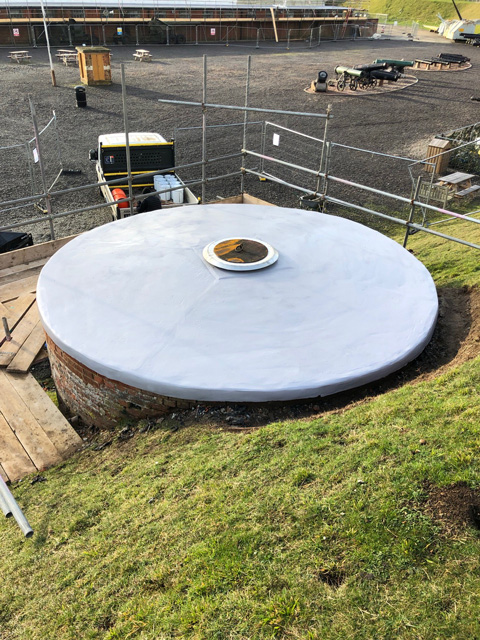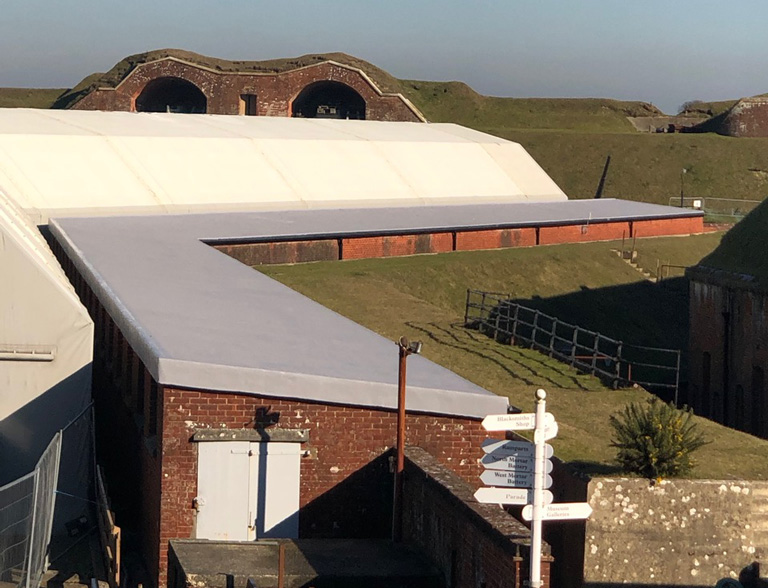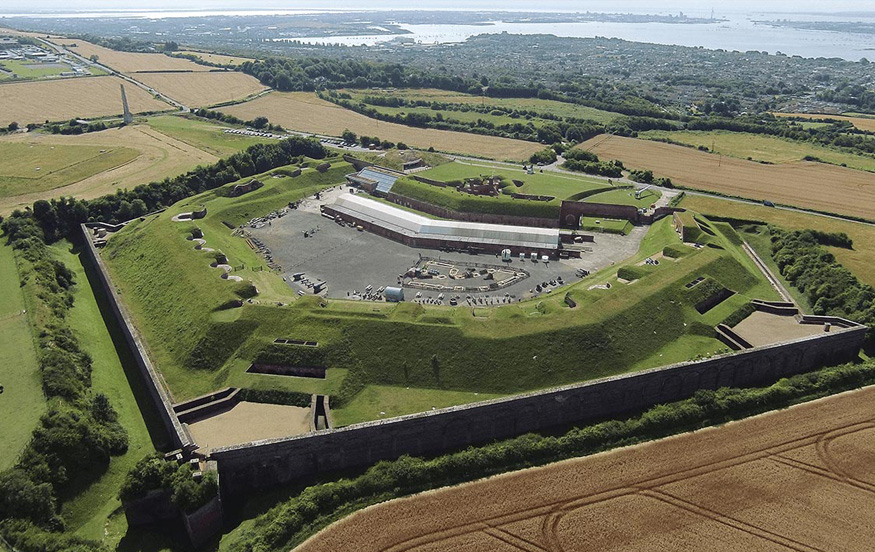The heritage market is a key sector for mastic asphalt and it is frequently specified by the National Trust and English Heritage, as well as other public and private owners of prestigious buildings for refurbishment projects.
An impressive project has been carried out at a military museum housing one of the world’s finest collections of artillery. Abbey Asphalt Roofing Ltd, a member of the Mastic Asphalt Council (MAC), has completed a mastic asphalt roofing refurbishment project at the Royal Armouries at Fort Nelson in Fareham – now a major landmark and visitor attraction in Hampshire.
Fort Nelson is one of three museums nationwide operated by the Royal Armouries which showcase some of the most important national collections of arms and armour. Fort Nelson is home to a collection of historic cannon and big guns, with over 350 cannon dating back over 600 years and from every corner of the globe.
Fort Nelson was originally built in the 1860’s and has a long history of housing military volunteers and army officers. This fully restored Victorian fort is located on top of Portsdown Hill overlooking the Solent, on a 19 acre site.
 Two roof areas required refurbishment and both had previously been protected with mastic asphalt – North and South side ammunition shed roofs which were 550m2 each and a circular ammunition hoist roof of around 14m2.
Two roof areas required refurbishment and both had previously been protected with mastic asphalt – North and South side ammunition shed roofs which were 550m2 each and a circular ammunition hoist roof of around 14m2.
The client Royal Armouries had been satisfied with the performance of the previously applied mastic asphalt roofing system over the years and selected mastic asphalt once again on the basis of its excellent durability, effective waterproofing properties and suitability for heritage applications.
At the pre-start meeting on this project, Health and Safety was discussed at length and Royal Armouries expressed that no naked flame was to be used during the roofing works as sandwiched between both roofs is a large canvas temporary building housing antique guns.
Abbey Asphalt Roofing Ltd reassured all meeting attendees that all the asphalt works on the roof would be flame-free, ensuring the site could remain open and fully operational during the roof refurbishment. As mastic asphalt is laid in molten form, it is often confused with other types of waterproofing membrane that require naked flame or torch on application. At no time is there any type of naked flame at the point of installation and because mastic asphalt is so highly flame resistant, there is little or no potential of fire risk.
Furthermore, the high mineral content of mastic asphalt renders it virtually incombustible. Mastic asphalt fulfils all the external fire resistance required for a roof covering and achieves the highest rating (AA) when tested in accordance with BS 476: Part 3. It has also been tested in accordance with draft European standards prEN1187-1 and prEN1187-2. No significant spread of flame was observed and no flame penetration occurred.
The specification for the roofing refurbishment at Fort Nelson involved the removal of the existing asphalt, 50mm insulation and felt vapour barrier. The new make-up of the roof comprised 10mm roofing grade asphalt vapour barrier laid on a fibreglass separating membrane, 50mm insulation boards bedded in PU adhesive and two 20mm coats of polymer modified roofing grade mastic asphalt laid on sheathing felt. The edge detail was a 250mm asphalt drip edge on the back side of the roof and lead apron and bullnose on the front. Both roofs were then painted with two coats of heritage grey solar reflective paint to tie in with the surroundings.
Phil Cullin, Managing Director of Abbey Asphalt Roofing Ltd said: “The roof refurbishment was carried out in the wet, winter months and we had to contend with adverse weather conditions. All in all, the work took around 14 weeks to complete. Throughout the contract, the site had to remain open to the public, so Health and Safety was absolutely paramount.”
 Mastic asphalt is one of the toughest waterproofing membrane systems currently available and it can be rapidly applied in testing weather conditions. Wind gives roofs a beating and vibration caused by wind can lead to material fatigue and crack formation. Hail and snow can also cause mechanical roof damage, whilst freeze/thaw cycles are a frequent source of breakdown for many roofing materials. Water expands when it freezes and can therefore enlarge cracks.
Mastic asphalt is one of the toughest waterproofing membrane systems currently available and it can be rapidly applied in testing weather conditions. Wind gives roofs a beating and vibration caused by wind can lead to material fatigue and crack formation. Hail and snow can also cause mechanical roof damage, whilst freeze/thaw cycles are a frequent source of breakdown for many roofing materials. Water expands when it freezes and can therefore enlarge cracks.
Phil continued: “Mastic asphalt was chosen for this project as it outperforms other roofing materials on many levels, especially in terms of durability. The client now has a virtually bomb-proof seamless waterproofing system that is guaranteed for 20 years, but with effective maintenance, is likely to last more than 60 years.”
The Building Research Establishment (BRE) has officially stated that asphalt roofing is capable of lasting 50-60 years, but the Mastic Asphalt Council (MAC) has many examples well in excess of this. Mastic asphalt was first laid at London’s St Paul’s Cathedral in 1906 and it provided well over 100 years’ of effective waterproofing before it needed replacement.
This article featured within the July edition of RCi Magazine – click here to take a look.

